Love at First Sight Between a Ladybug and a Tsunami
On Curtis Talwst Santiago’s exhibition project at Martina Simeti
In the exhibition project designed for the Galleria Martina Simeti, Curtis Talwst Santiago unfolds a new chapter of his Infinity Series. In this project begun in 2008, the artist creates complex miniatures inside cases supposed to be house jewellery, in which dioramas on various themes following on from one another are embedded. The settings and scenes in the past have narrated issues linked to the diaspora, to “black” identity, to unrest and revolt, and it is here that the focus is most sharply on personal aspects, on a degree of intimacy and erotic fantasies. A storytelling approach emerges which draws on a tradition of Afro-Caribbean tales, as the writer Abdourahman Waberi notices in this text accompanying the exhibition.
Curtis Talwst Santiago is a magician with the fingers of a fairy. Yet, magician as he is, he’s a wise one: he won’t use powder or philters for hypnotic ends because he has more effective assets up his sleeve, forged by a creative imagination focused on counteracting the traumas of history. He moves forward, cautiously, like a tracker in the heart of the tropical forest on the trail of a perfume, retrieving it as if by miracle here and there along the way. Losing it too, sometimes. This magnanimous tracker doesn’t know what he’s after, he only has the conviction that he’ll know it when he sees it, from far off or from behind. In a delicate, subtle way, the tracker can give way to the Creole storyteller who will display, under our astonished eyes, now miniature universes set in luxurious cases, now colossal paintings. Works sometimes only three or four years old, sometimes as old as four or five centuries. In short, works that are in turn both younger and more ancient than we are. And preceding us in the oblivion we are already slipping into..
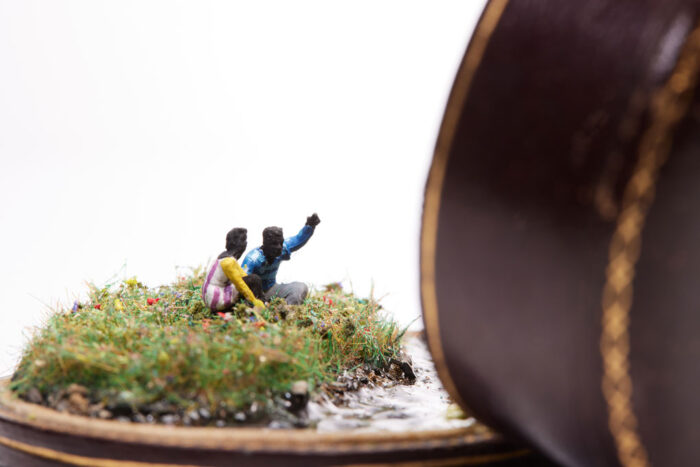
Long ago, says the Creole storyteller, the world of the Africans knew no limits. Little children, ancestors, animals and spirits travelled together in the thickness of time. But they remained connected by their dialects, their beliefs, and their customs in harmony with the natural world around them, and nourished by it. Then the conquistadors arrived: their cannons roared in the deep of night and the light of day. The powerful interests of their bastions prevailing over everything else, new borders were drawn up, the land of men divided up, the children sold, the gods expelled, and the families rent apart.
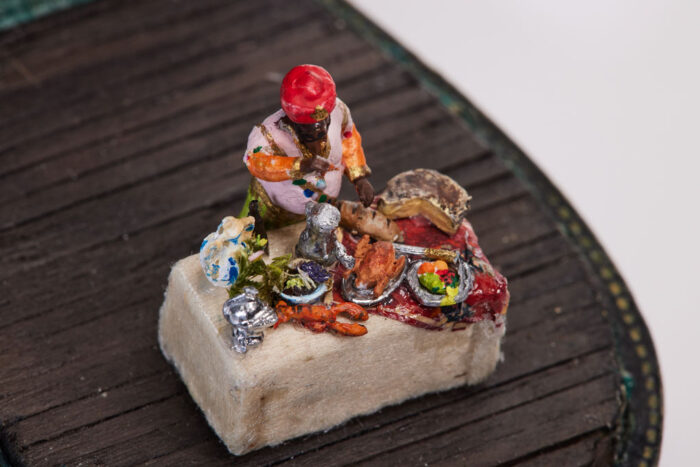
Today, born in the region of the great plains, a child awakes to the resources of a world both new and venerable, both immense and compact. With a conch pressed against his ear, the child reclaims it and from it, he creates dioramas that can fit in your pocket or in the palm of your hand. The die is cast by the magician. Connections are formed: cathedrals and theaters of dreams past, present and future. The mind of the child maroons, wanders up hill and down dale, a prelude to the steps of the man who will set out and explore the depths of the great prairies, the heart of the big cities, of ancestral islands and familiar countries, because to him nothing is foreign. The child’s feet are solidly anchored in the rhythms of the distant past and his head is spinning in the wake of the ancestors who speak in their click languages, wrapped in magnificent costumes, animated by immemorial rites, and with strong ties to an inexhaustible memory.
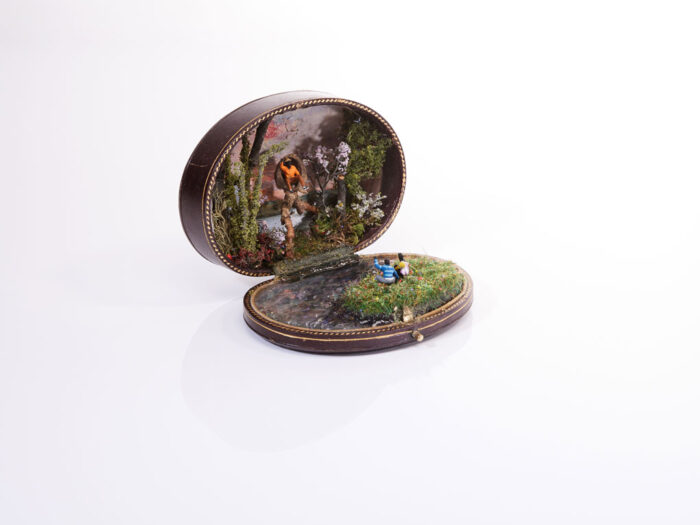
The child wakes up every time to this world born from other worlds of yesterday and of elsewhere, limitless, borderless worlds. This child now has a name, and he has a voice. His quests, finally his own, are intimate and universal births, human algorithms irrigated by multiple dreams, engenderings nourished by the strength of intuition and the inductive fire of his creative imagination.
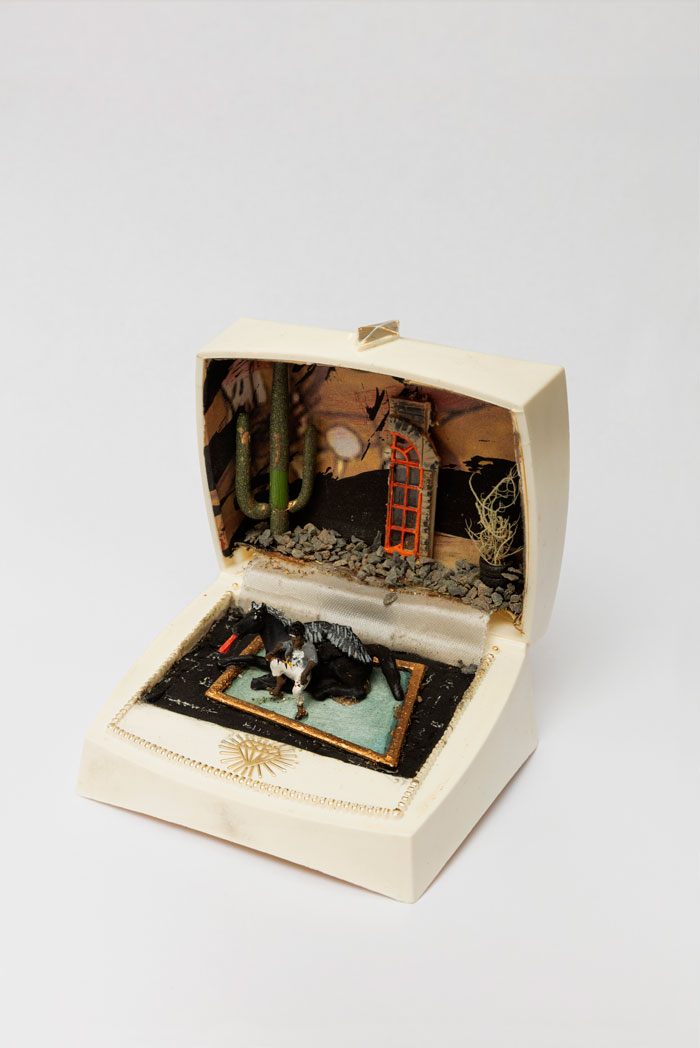
That child crafts whole universes with irreverence, mischief, and joy. You need brains to dare put the whole world under our noses, within our grasp. To force us to examine it closely, to observe, sound its depths, to open our eyes wide in order to marvel at beautiful landscapes in which a bonsai might look like a majestic baobab.
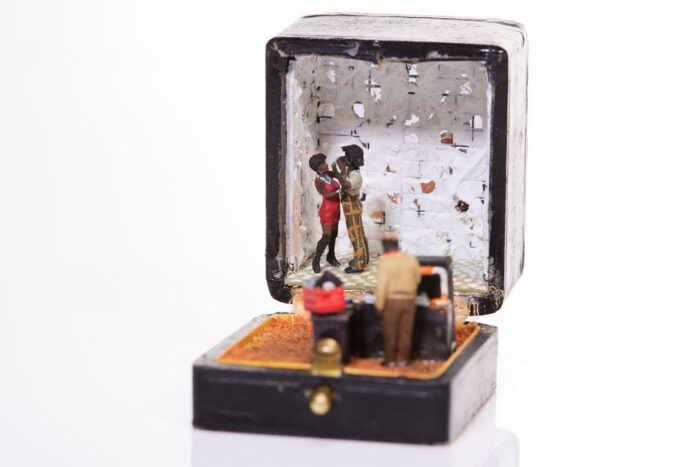
In the space of an instant, for the time of a daydream, we have the illusion of holding the world in the palm of our hand, and with it, the capacity to help and rescue it. To slow down its race to the abyss. And now we, too, are taken over by the irreverence, mischievousness and joy of Curtis Talwst Santiago.
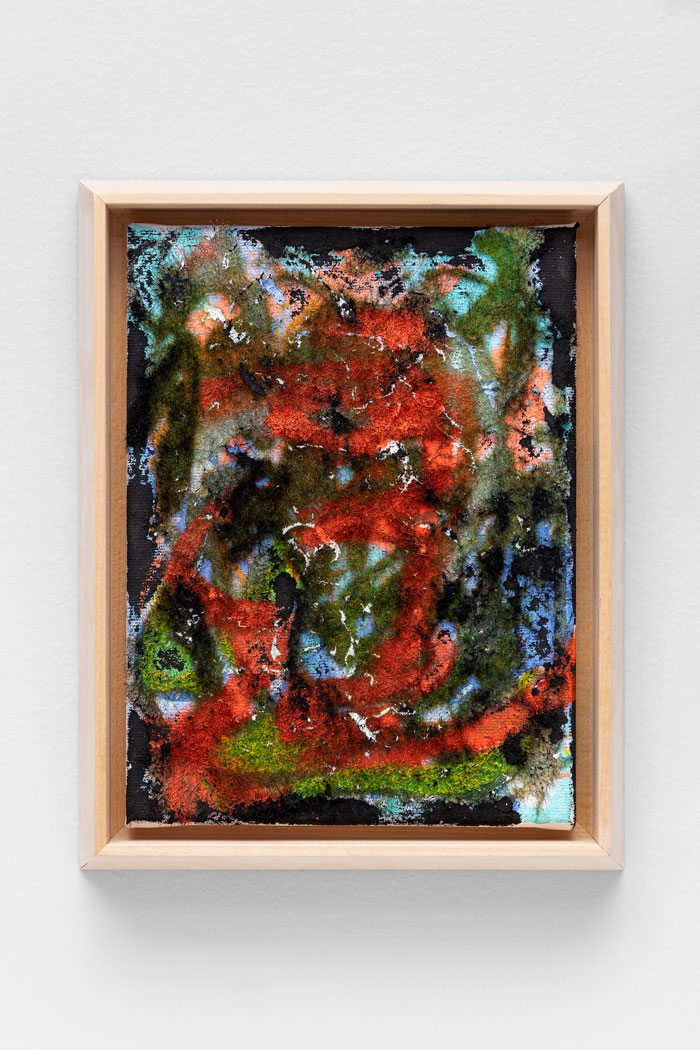
We are thousands of little hands called to the rescue, at the bedside of the old world in its death throes. We are the shields of the fragile spaces that predators—like the conquistadors of yesteryear—sacrifice on the altar of profit. For too long now, we have counted the dead thrown to the bottom of the sea, deplored vanished divinities and cried over extinct species.
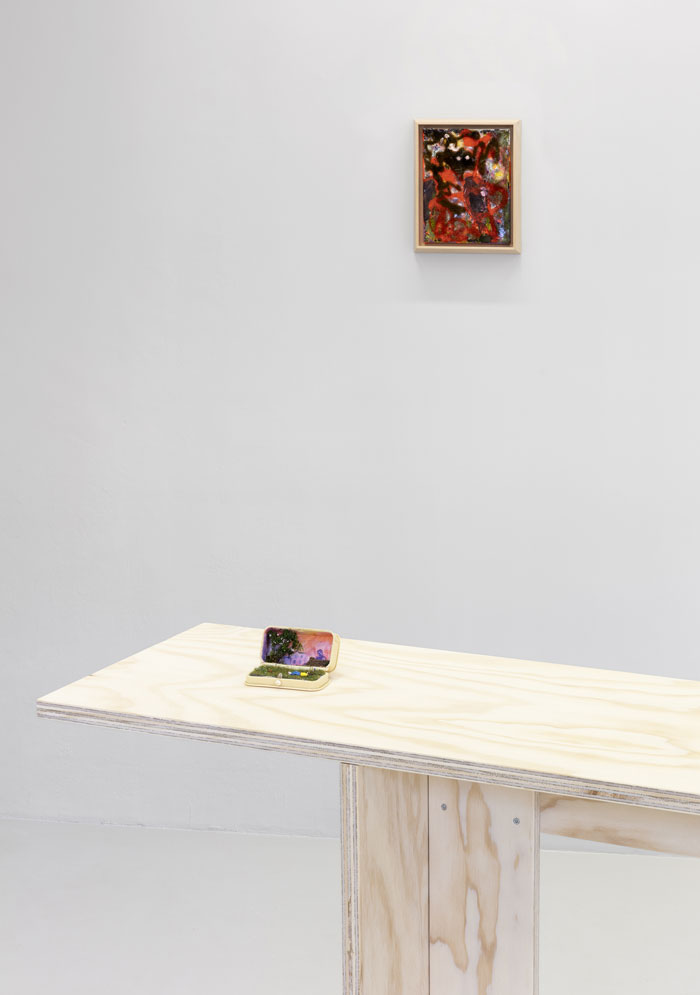
That time has passed. Our pupils are now oversensitive to the universe, our breath is blowing on its neck. We are the eye that keeps watch, defends the living and rises against those who are destroying it. We are not alone. We are legion. A crowd of eyes. A mass with a critical mind, divinely bound together. We are the hands drumming, the masks dancing, the rivers roaring, the cyclones streaking the firmament… We will defend it beak and claw to the very end. Because there is more humanity in the ecosystem imagined and conceived by Curtis Talwst Santiago than in all the warehouses of Amazon.com.
We made a world from our first glance. And we made love the second day. Between us, there is the nectar of the unknown, the alchemy of the road, and with a ladybug and a tsunami, there is love at first sight.
This text was translated by David et Nicole Ball on October 24th, 2020.



